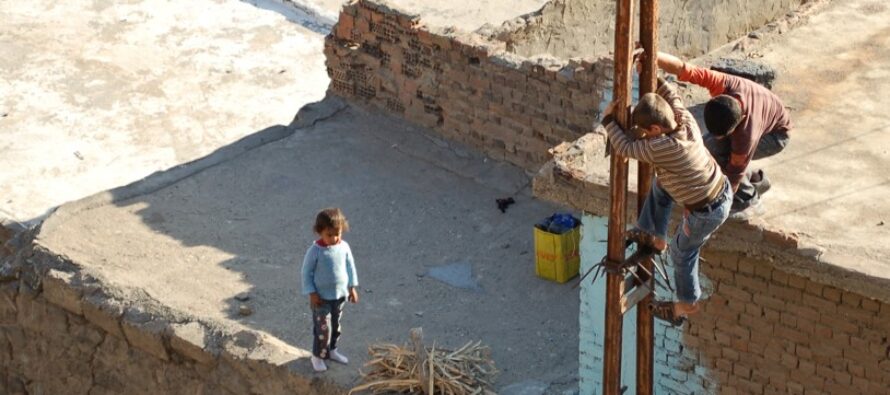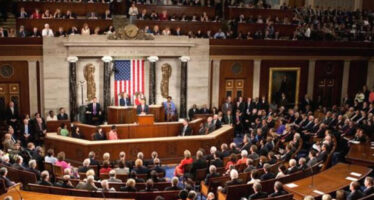SUR: The Turkish state’s systematic destruction and commercialization of a World Heritage Site

![]()
The following report describes the developments in Sur from 2015 until January 2019. It was presented in February 2019 at the “International NGO forum on World Heritage” in Paris by Ercan Ayboga from the Platform “No to the Destruction of Sur”, a campaign based in Diyarbakir/Turkey. If you would like to get in touch with the Mesopotamia Ecology Movement, please email: mehdiplo@riseup.net
The World Heritage Site of Diyarbakir consists of an old fortress and the adjacent Hevsel Gardens, which lie between the fortress and the Tigris River. The soul of the site is the vibrant old city, a buffer zone-like area called Sur or Suriçi. With a past of 4000 years and its multilingual, multi-cultural and multi-layered character, the fortified old city hosts 600 cultural properties from numerous Eastern and Western civilizations. It was mainly the strong local civil society and municipalities, which pressured the Turkish Government to apply to the UNESCO World Heritage Committee (WHC). In 2015, the “Diyarbakir Fortress and Hevsel Gardens Cultural Landscape” was inscribed as a World Heritage Site.
After the end of the 2,5 year-long negotiations between the Turkish government and the Kurdish opposition about a political solution of the unsolved Kurdish question, the civil war that started in 2015 also reached Diyarbakir city. After the declaration of several 24-hour blockades by the state, officially referred to as “curfews”, police operations were launched in Sur in the fall of 2015. With the involvement of the military and heavy weapons such as tanks, the 6th curfew started on December 11, 2015. The armed conflict officially ended on March 10, 2016, and led to the death of some hundred people, but to date this curfew continues in five of six affected neighborhoods of Eastern Sur. It is estimated that during the armed conflict 450 buildings were destroyed, either completely or significantly. The fortress, having been used by the Turkish military for its operations, also received some damages.
The main physical destruction in Sur happened after the official end of state operations. In the blockaded areas, governmental teams also systematically destroyed intact buildings, including monuments, by using heavy equipment. In Eastern Sur, the demolition continued until the summer of 2017. Debris has been continuously excavated so quickly and roughly to different deposit sites that no serious efforts have been done to rescue any authentic elements of monuments among the ruins.
Parallel to the ongoing destruction, the Turkish government issued an expropriation order of the whole old city on March 21, 2016. This decision aims to transfer even old mosques and churches to the government. To date, the expropriation has already been realized for a major part of the destroyed areas. All owners of the buildings filed suits against this enforced expropriation which foresees low compensation amounts.
Some of the complaints have been refused by the court when there were already 60 cases at the Constitutional Court. As jurisdiction is no longer independent in Turkey, the plaintiffs will take the case to the European Court for Human Rights. For the displaced people on rent, the government offered, with delay, almost no financial support. The main condition set for those in Sur, who could prove their residency, in order to receive a low amount of financial maintenance support for 1 or 2 years, was to move out of Sur. Although the Western part of Sur remained largely intact, Sur residents were not allowed to rent homes there.
After all municipalities in Diyarbakir city – all being in opposition to the government and the destruction in Sur – were seized by state appointed governmental trustees in the fall of 2016, based on a decree possible under the declared state of emergency, and after the co-mayors were arrested, the Urban Conservation Plan of Sur (Turkish: Sur Koruma Amaçlı İmar Planı) from 2012 was revised immediately in order to provide a legal basis for the destruction in progress. The revision argues also with a governmental “law on the transformation of risky areas” (numbered 6306)* from 2012 – which has not been discussed with the municipalities – on Sur, considering the entire old city as a risky settlement area. Despite all criticism by civil society, the court rejected the cases. In the security-led revision, for instance, schools were turned into police stations, but no alternative educational areas were determined. Most streets – remaining from Roman times – were widened so that military vehicles could pass. The chamber of engineers and architects (TTMOB) filed a suit against the revised Urban Conservation Plan of Sur, as well as against the expropriation decision from March 2016, which are still pursued by the responsible administrative court. As it became clear during the lawsuit that the government did not act on a legal basis, very soon the law from 2012 was changed accordingly.
At end of 2016 the government formed a “scientific commission” of uncritical experts, who justified the ongoing state-led destruction. Its main argumentation was that due to explosives placed in the buildings of the contested area, there was a need to destroy almost all buildings in five neighborhoods of Eastern Sur.
In May 2017, the Turkish government started with the complete destruction of the two neighborhoods Lalebey and Ali Paşa in Southwestern Sur, where no armed clashes have happened. After months of protests by the inhabitants and big parts of the civil society, the houses of thousands of people were demolished with heavy police presence. The official justification was a rehabilitation project from 2011, which the responsible municipalities had nullified in 2013.
Satellite images from May 2016, August 2016 and July 2017 show the progressive destruction of buildings and areas in Sur. While in Eastern Sur the number of completely destroyed and subsequently erased buildings was 832 (10,7 hectares destroyed) in May 2016, this number rose to 1519 (20,3 hectares) in August 2016 and to 3569 in July 2017. This is equivalent to an erased area of 46,3 hectares. If we add 806 destroyed buildings from Southwestern Sur, there are in total 4376 destroyed buildings which meet 58 hectares, 40% of the old city area and home to approx. 23.000 people. In total, 170 monuments, i.e. architecturally registered and conserved civil and public buildings, were destroyed or damaged in Sur according to the satellite photo dated on August 2016. In detail: 89 monuments of civil and public value have been destroyed completely and 40 partially; 41 monuments have been damaged. Of these 170 registered structures, 13 are monuments. One of the destroyed monuments was located in the citadel, which is World Heritage propriety.
After the Regional Board for the Conservation of Cultural Assets abolished its conservation status as a result of governmental pressure, it was destroyed in order to build a park in 2017. For this purpose, excavations of two meters were done at several locations – an act violating the World Heritage Site Management Plan. The population left this area in 2012/2013 in order to do excavations under the ground where antique monuments, including a Roman amphitheater, had been detected.
In the spring of 2017 the construction of 60 new buildings was started in erased Eastern Sur. At end of 2017, Southwestern Sur followed with several hundreds of new buildings – 200 are completed. They are all built with reinforced concrete, with no typical courtyards and in big distance to each other, which is a strong violation of the historical old city fabric and the architecture of traditional Diyarbakir houses. The revised and extremely weakened Urban Conservation Plan opens the door for such new constructions. As the new houses will be several times more expansive than the expropriation compensation, the usually poor former inhabitants will be unable to move back to their neighborhoods. A change of the demographic structure is expected.
For the new housing projects the government built basements and installed new pipes for water, waste water and electricity for which excavations of up to three meters have been done. As this area has a settlement past of at least 4000 years and since houses in Diyarbakir have no basements, this work is destroying the widespread archaeological layers under the ground. Again, debris is excavated quickly and roughly with no effort to save any authentic elements of monuments. This is absolutely unnecessary. Sur had no serious challenges with water and electricity supply since 2002, when the municipalities carefully improved infrastructures. Parallel to this work in 2018 a double track road was constructed along the fortress in Eastern Sur, which was not even included in the revision of the Urban Conservation Plan of Sur. Before, there was partially a small road.
The destruction of the World Heritage site of Diyarbakir is not limited to the old city. The Ministry for Environment and Urban Planning put in action the “Tigris Valley Project”, which had been cancelled during the UNESCO application process at the beginning of 2015 – in fact, it had been a precondition for the inscription. It has also started to canalize the bed of the river. The existing large sand quarry pond in the river plain is allowed to be operated by a company – the legal status of this pond has been questionable for years. The mainly natural ecosystem of the suburban river stretch has been destroyed completely in the buffer zone. Because of a complaint by the chamber of engineers and architects, the aimed canalization of the river flowing as the boundary of the Hevsel Gardens, which are directly World Heritage property, could be stopped temporarily.
While in 2017 the government constructed some buildings in the unsettled buffer zone within the Tigris Valley, this approach dramatically changed in 2018 and now foresees widespread commercial locations. As the local elections are approaching (planned for March 31, 2019) the state appointed governor of the Sur district recently declared to create a 15 hectares “people’s garden” in the higher parts of the Hevsel Gardens at the fortress. Dozens of inhabited houses have already been destroyed and at least hundreds of trees were cut at end of 2018.
According to that which the governor has shared with the public, two entrances from the old city through the fortress are planned, which would amount to the physical destruction of World Heritage property! The operation of this “people’s garden” is planned to be held privately and with a luxurious gastronomy, which increases the risks to the World Heritage properties of the fortress and Hevsel Gardens.
As part of the governmental commercialization policy, the destruction of the two adjacent neighborhoods Feritköşk and Dicle with their 9,000 inhabitants, situated northwards in the buffer zone of the Tigris Valley, is planned. In August 2017, they were declared as “risky areas”. The aimed “urban transformation” is justified with poor construction conditions, which is partly true. As this area is of interest for investments, the planned new buildings will be sold at expensive prices and thus the current inhabitants, mostly poor, will not return.
It can be concluded that unfortunately no effort is being done for any rehabilitation of Sur according to the ICOMOS/WHC guidelines or with any participation of the civil society and affected people.
In summary, it needs to be stated that in almost half of Sur, apart from the destroyed buildings, the original street fabric and the insular-parcel integrity have been irreparably lost. Together with the forced exodus and forced expropriation, it leads to the eradication of the traditional-social life, trade forms and urban social memory, developed over thousands of years, the change of propriety, the change of the demographic structure and the interruption of cultural continuity. The ongoing “Tigris Valley Project” is another big threat to the Word Heritage Site Diyarbakir outside of the fortress, which should not be underestimated. If all planning of the Turkish government would be implemented, the World Heritage Site of Diyarbakir would completely lose its core values and its uniqueness. The result would be a new old city with a completely new population, which has no relation to the cultural heritage of Diyarbakir, and a big commercialized area serving only big investments and profit, while erasing the local culture.
Concerning the UNESCO World Heritage Committee (WHC)
The UNESCO World Heritage Committee has asked the Turkish government for information on the World Heritage Site of Diyarbakir at the beginning of 2016, after the World Heritage Site Management sent its reports and after news were published internationally on the armed conflict and destruction in Sur. There was no initiative by the Turkish government to inform the UNESCO WHC/Center. The UNESCO WHC was kept satisfied with the information given by Turkey, which downplayed the destruction during and especially after the armed conflict. The decisions of the UNESCO WHC in 2016 and 2017 expressed concerns in a superficial way, but never challenged Turkey, while failing to stop the ongoing destruction of cultural heritage and livelihoods, following grave actions and projects.
The last decision of 2017 has given Turkey time until December 2018 for a new state of conservation report on Diyarbakir. Like the former state of conservation reports on Diyarbakir, only a short summary has been published. It does not contain any information on whether a Heritage Impact Assessment (HIA) for urban design projects or a Master Plan has been prepared in a proper way as requested by the WHC. It is clear that there is not much to say by the Turkish government as its distressing approach on the WH Site of Diyarbakir has not changed significantly.
In this regard, the following decisions are requested from the UNESCO WHC to take at its 43nd Session in Paris/France:
1) The WHC should make every effort to have the UN security ban over Diyarbakir lifted in order to send a Reactive Monitoring Mission to Diyarbakir without further delay. There is absolutely no security concern in Diyarbakir city as claimed by the Turkish government. This mission should meet also (non-)displaced people from Sur and all civil society organizations working on Sur.
2) The WHC should urge the Turkish State Party to immediately stop all activities in the World Heritage Property and its buffer zone, particularly the destruction of buildings and other structures, the removal of debris, the expropriation and displacement of local inhabitants, the construction of new housing projects, the revived “Tigris Valley Project” and the “Peoples Garden Project” until they have been assessed and approved by the Committee.
3) The WHC should urge the Turkish State Party to cancel its decision to expropriate 82% of Sur, dated on March 21, 2016, and the revision of the Urban Conservation Plan, dated on December 2016.
4) The WHC should request from the Turkish State Party that all further assessments, documentation and urban design planning have to be done with the direct participation of affected people, civil society (chamber of architects/engineers, unions, human rights organizations, cultural associations etc.) and independent scientists from different fields in an open and participative process, and with the WH Centre/ICOMOS in a consulting capacity.
5) The destroyed parts of Sur should be reconstructed according to the original Urban Conservation Plan (2012) and the WH Site Management Plan with a strong participation by civil society and inhabitants of Sur, including the displaced people. The latter should be able to return to their former neighborhoods with the financial support of the state and build new homes according to their needs and oriented at the traditional urban design of Diyarbakir.
6) In view of the ongoing massive destruction, well-documented by photos and plans, the WHC should inscribe the Diyarbakir Fortress and Hevsel Gardens Cultural Landscape in the List of World Heritage in Danger; following the example of the destruction of the Historic Center of Shakhrisyabz/Uzbekistan.
7) The WHC should urge the UNESCO Director-General to invoke the UN Security Council over the case of Diyarbakir based on the UN Security Council Resolution 2347 (March 2017) on the destruction and smuggling of cultural heritage.
See original law: http://www.mevzuat.gov.tr/MevzuatMetin/1.5.6306.pdf
* By Ercan Ayboğa Source – Komun Academy
Komun Academy is an online platform of the revolutionary Kurdish freedom movement to share its theory, history, and praxis with internationalists around the world. At Komun Academy, we believe in the power of accessible radical theory.
Image
Roof children – Diyarbakir
By, David via flickr.com
Links
Sur (Diyarbakir) under attack (Images)
“Displaced and Dispossessed”. Turkey Condemned for Forced Exodus of Kurds from Diyarbakir
Related Articles
Chomsky: The Rojava Revolution is a miracle that the world must see
![]()
Noam Chomsky said that Rojava is going through a difficult process and that it is a miracle that it has
WAR ON AFRIN: The First Seven Days
![]()
Just over a week into the Turkish military assault on Rojava, conflicting reports give varying updates on the situation in the Afrin canton
US House approved resolution recognising Armenian Genocide
![]()
This resolution marks the first time that a house in US Congress has designated 1915 incidents as genocide. The US




